Greenock and Ayrshire Railway
Introduction
This railway is closed. A short portion remains, out of use, to give access to the Greenock Containerbase (formerly Greenock Princes Pier [2nd]). The line was the Glasgow and South Western Railway's answer to the Caledonian Railway's line from Glasgow to Greenock, which remains open today. But it was more than that, it could also be approached from Ayrshire. It was an express line, well engineered but crossing high ground. As a result powerful locomotives were required to cover the distance from Glasgow to Greenock in a similar time to the Caledonian. The Greenock terminus was located on a pier from which steamers run to various Clyde destinations, a step up from the contemporary Caledonian route which terminated near, but not at, a pier. The latter company completed its line to Gourock Pier to improve its position, leading the G&SWR to rebuilt and improve its terminus. After 1923 both routes were owned by the same company, the LMS. For the last days of the line as a through route it carried boat trains over a single track route (an echo of the Caledonian's line to Ardrossan). Unfortunately the high ground made the line more expensive to operate than the former Caledonian line. Not only this but its stations served a lower populated area. Final approach to the Greenock pier was steeply graded and through tunnels. Runaways were not unknown.
Dates
Portions of line and locations
This line is divided into a number of portions.
Elderslie Fly Under
Built on the route of the former canal.

Colin Kirkwood 06/07/1965
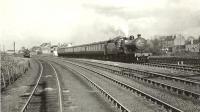
G H Robin collection by courtesy of the Mitchell Library, Glasgow 05/05/1959

Graham Morgan 16/07/2008
West of Elderslie station was a flyunder which allowed a train from the station's slow westbound line to pass under the Ayr mainline to reach Cart Junction and then proceed to Greenock Princes Pier or south via Kilbarchan.
...

Colin Kirkwood 29/08/1965

Graham Morgan 26/06/2006
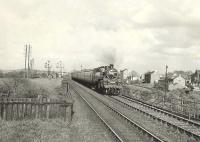
G H Robin collection by courtesy of the Mitchell Library, Glasgow 05/05/1959
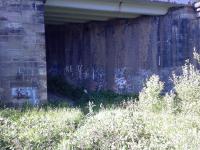
Graham Morgan 26/06/2006
This was a large junction of which little remains today, the trackbed being a footpath. The junction was on the south bank of the Black Cart Viaduct.
...
See also
Bridge of Weir Railway
Kilbarchan Loop (Glasgow and South Western Railway)
North Johnstone Branch (Glasgow and South Western Railway)

G H Robin collection by courtesy of the Mitchell Library, Glasgow 22/04/1954
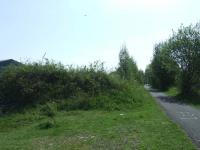
Graham Morgan 14/05/2008

Bill Roberton //1975
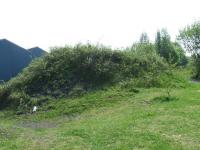
Graham Morgan 14/05/2008
Johnstone Curve
This was a double track junction east of Johnstone station which was opened with the Greenock and Ayrshire Railway allowing a train from Ayrshire to take the line to Greenock Princes Pier. The north end of the curve was at Cart Junction.
...
See also
Glasgow, Paisley, Kilmarnock and Ayr Railway
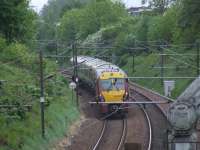
Graham Morgan 20/05/2008
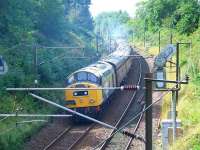
Graham Morgan 24/08/2008
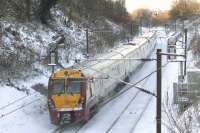
Graham Morgan 02/12/2010
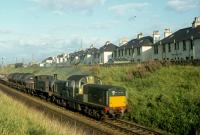
Colin Kirkwood 27/08/1963
This was a large junction of which little remains today, the trackbed being a footpath. The junction was on the south bank of the Black Cart Viaduct.
...
See also
Bridge of Weir Railway
Kilbarchan Loop (Glasgow and South Western Railway)
North Johnstone Branch (Glasgow and South Western Railway)

G H Robin collection by courtesy of the Mitchell Library, Glasgow 22/04/1954

Graham Morgan 14/05/2008

Bill Roberton //1975

Graham Morgan 14/05/2008
Bridge of Weir to Greenock
This was a two platform station with a goods yard on the north side, served from the east. It was located to the south east of Bridge of Weir.
...

G H Robin collection by courtesy of the Mitchell Library, Glasgow 21/04/1954

G H Robin collection by courtesy of the Mitchell Library, Glasgow 21/04/1954
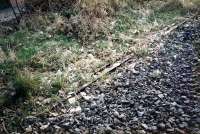
Ewan Crawford //1987

Ewan Crawford //1987
This is a disused five span double track viaduct over the River Gryfe in Bridge of Weir, west of Bridge of Weir [2nd]. The arches are skewed. The viaduct is 39 ft high.
...

Graham Morgan 30/08/2007

Graham Morgan 30/08/2007
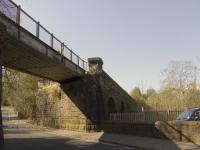
Graham Morgan 19/04/2009
This intermediary box was between Kilmacolm and Bridge of Weir [2nd]. The box was on the south side of the lne just to the east of the occupational bridge at Scart Farm. The box was located at the top of the cutting to gain a clear view.
...
This was a three platform station on the Elderslie to Greenock Princes Pier [2nd] line. Two platforms were through lines and a third, a bay on the westbound side, faced Greenock. The platforms were heavily canopied.
...

Brian Haslehust 17/08/1966

Brian Haslehust 24/06/1964

G H Robin collection by courtesy of the Mitchell Library, Glasgow 08/11/1958

Ewan Crawford 28/09/2017
Site of a possible short lived station at Upper Port Glasgow Siding? ...
More detailsThis goods yard was not in Port Glasgow itself but located around a mile and a half south east. A station was (probably) not opened (Upper Port Glasgow).
...

G H Robin collection by courtesy of the Mitchell Library, Glasgow 25/08/1958

G H Robin collection by courtesy of the Mitchell Library, Glasgow 02/08/1958

G H Robin collection by courtesy of the Mitchell Library, Glasgow 25/08/1958

G H Robin collection by courtesy of the Mitchell Library, Glasgow 25/08/1958
This siding was also known as Devol Glen Quarry siding and Gibbshill Siding. The siding was on the south side of the line, approached from the west, with Giibshill Signal Box on the north side of the line. Devol Glen Quarry was to the south of the siding.
...
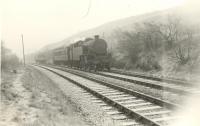
G H Robin collection by courtesy of the Mitchell Library, Glasgow 31/01/1959
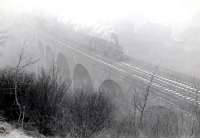
G H Robin collection by courtesy of the Mitchell Library, Glasgow 31/01/1959

G H Robin collection by courtesy of the Mitchell Library, Glasgow 02/08/1958
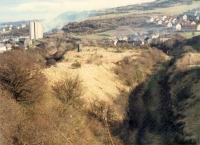
Ewan Crawford //1988
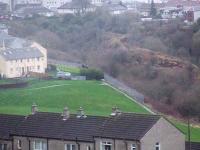
Graham Morgan 20/01/2007
This junction was formed in 1886 when the James Watt Dock and a goods line to the dock at Inchgreen were opened. The junction was with the 1869 Greenock and Wemyss Bay Railway, part of the Glasgow and South Western Railway from 1872.
...

Graham Morgan 23/05/2007

Graham Morgan 23/05/2007

Graham Morgan 23/05/2007

Graham Morgan 23/05/2007
This is a disused double track six arch masonry viaduct, over the Carts Burn, on the former Greenock and Ayrshire Railway located between the former Cartsburn Junction (to the east) and former Lynedoch station.
...

John Gray //1967

G H Robin collection by courtesy of the Mitchell Library, Glasgow 08/11/1958

Graham Morgan 25/10/2006

Graham Morgan 25/10/2006
This was a two platform station above Greenock, to the north. The station had access from Drumfrochar Road to the east. The main station building was on the eastbound platform.
...

G H Robin collection by courtesy of the Mitchell Library, Glasgow 02/08/1958

G H Robin collection by courtesy of the Mitchell Library, Glasgow 08/11/1958
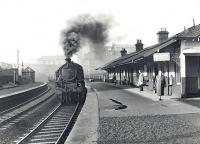
G H Robin collection by courtesy of the Mitchell Library, Glasgow 08/11/1958

Graham Morgan 22/03/2011

Graham Morgan 22/03/2011

Colin Miller /06/1969
This junction was west of Greenock (Lynedoch) and provided access from the Greenock Princes Pier to Elderslie main line to the Lynedoch Goods yard, the Glasgow and South Western Railway's main goods yard within the town, south of the competing Caledonian Railway's Greenock Goods.
...

Graham Morgan 22/03/2011

Ewan Crawford 03/08/2017

Graham Morgan 22/03/2011

Graham Morgan 22/03/2011
This is a disused double track tunnel between the former Greenock Princes Pier [2nd] and Greenock (Lynedoch) stations. The tunnel is 718 yds long.
...
This was a three road shed occupying a small cramped site on the west side line on its final approach to Greenock Princes Pier [2nd] from the Union Street Tunnel. Approach was from the south.
...

Colin Kirkwood 17/04/1965
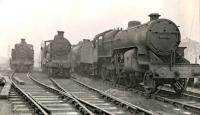
G H Robin collection by courtesy of the Mitchell Library, Glasgow 31/01/1959

G H Robin collection by courtesy of the Mitchell Library, Glasgow 02/08/1958
In 1969 the former Greenock Princes Pier [2nd] was redeveloped as a container port. The railway was re-instated in 1971 to a set of siding laid out near the former Princes Pier Shed just to south of the A770. The disused railway bridge over the A770 was retained to allow vehicles to reach the sidings from the base.
...

Bill Roberton //1992

John Furnevel 29/04/2007

Ewan Crawford //

G H Robin collection by courtesy of the Mitchell Library, Glasgow 02/08/1958

G H Robin collection by courtesy of the Mitchell Library, Glasgow 02/08/1958

Robin McGregor 20/10/1962

Colin Kirkwood 17/04/1965
This was the terminus and pier of the Greenock and Ayrshire Railway in Greenock. The terminus and pier were built on reclaimed land, formerly Bay of Quick. Albert Harbour was built just to the east, the former Albert Quay. The pier opened, before the railway, in 1866. The station opened in 1869. It was replaced in 1894 by Greenock Princes Pier [2nd].
...
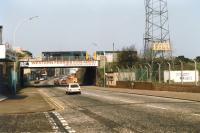
Bill Hamilton /11/1983

G W Robin 25/08/1965

G W Robin 25/08/1965

G W Robin 25/08/1965

...
Colin Miller //1980

Colin Miller /05/1965
Greenock Princes Pier was rebuilt for the Glasgow and South Western Railway in 1894 in a grand Italianate style. This was to counter the Gourock extension of the Caledonian Railway which opened in 1889 (and even the opening of Craigendoran Pier on the north bank in 1882).
...

G H Robin collection by courtesy of the Mitchell Library, Glasgow 08/11/1958

G H Robin collection by courtesy of the Mitchell Library, Glasgow 08/11/1958

G H Robin collection by courtesy of the Mitchell Library, Glasgow 02/08/1958

G H Robin collection by courtesy of the Mitchell Library, Glasgow 02/08/1958
Inchgreen Branch
This junction was formed in 1886 when the James Watt Dock and a goods line to the dock at Inchgreen were opened. The junction was with the 1869 Greenock and Wemyss Bay Railway, part of the Glasgow and South Western Railway from 1872.
...

Graham Morgan 23/05/2007

Graham Morgan 23/05/2007

Graham Morgan 23/05/2007

Graham Morgan 23/05/2007
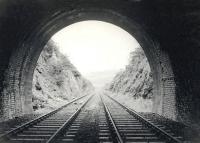
G H Robin collection by courtesy of the Mitchell Library, Glasgow 11/08/1963

G H Robin collection by courtesy of the Mitchell Library, Glasgow 11/08/1963
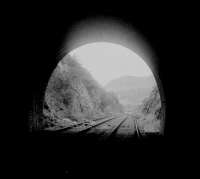
John Robin 13/08/1963
This commercial dock was completed in 1886 for the Greenock Harbour Trust. It is a wet dock 2000 ft long (east-west) and 300-350 ft wide with a tongue at the east end. The dock's main entrance is from the west, alongside the Garvel Dry Dock. Another subsidiary entrance to the east connects with the Great Harbour [Greenock] . Both entrances were equipped with gates to allow the 32ft ...
More detailsSee also
Greenock Harbour Trust

Ewan Crawford 18/10/2022

Ewan Crawford //1999

Ewan Crawford //1989

Bill Roberton //1992
The goods yard was on the north side of the Port Glasgow Road. It competed with the Caledonian Railway's Bogston Goods on the south side of the road. The sidings were at the end of a double track branch from Cartsburn Junction. It opened as part of the Glasgow and South Western Railway's railway to the 1886 James Watt Dock.
...

Graham Morgan 31/08/2007
This gas works was located on the shore west of Port Glasgow, specifically it was between the Inchgreen Graving Dock (west side) and Inch Works (Engineering and Shipbuilding) (east). The works had a small pier on the River Clyde on its north side. The land the gas works was located on had been the Inch, a small island before land reclamation of mudflats. It was opened by the [[Greenock ...
More details
Locher Viaduct
This viaduct was between Bridge of Weir [2nd] and Tweenie Hills. It had been a single track viaduct with replacement double track viaduct alongside.

Graham Morgan 12/07/2006

Graham Morgan 12/07/2006
Lynedoch Goods
This junction was west of Greenock (Lynedoch) and provided access from the Greenock Princes Pier to Elderslie main line to the Lynedoch Goods yard, the Glasgow and South Western Railway's main goods yard within the town, south of the competing Caledonian Railway's Greenock Goods.
...

Graham Morgan 22/03/2011

Ewan Crawford 03/08/2017

Graham Morgan 22/03/2011

Graham Morgan 22/03/2011

G H Robin collection by courtesy of the Mitchell Library, Glasgow 11/08/1963

Graham Morgan 22/03/2011

Graham Morgan 22/03/2011
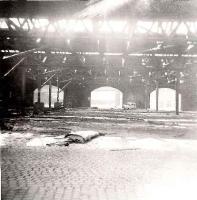
John Gray //1967

Colin Miller /06/1969
Books
 Legends of the Glasgow and South Western Railway in the L.M.S.Days |  Scotland’s Lost Branch Lines: Where Beeching Got It Wrong | 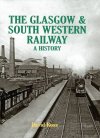 The Glasgow & South Western Railway a History |












